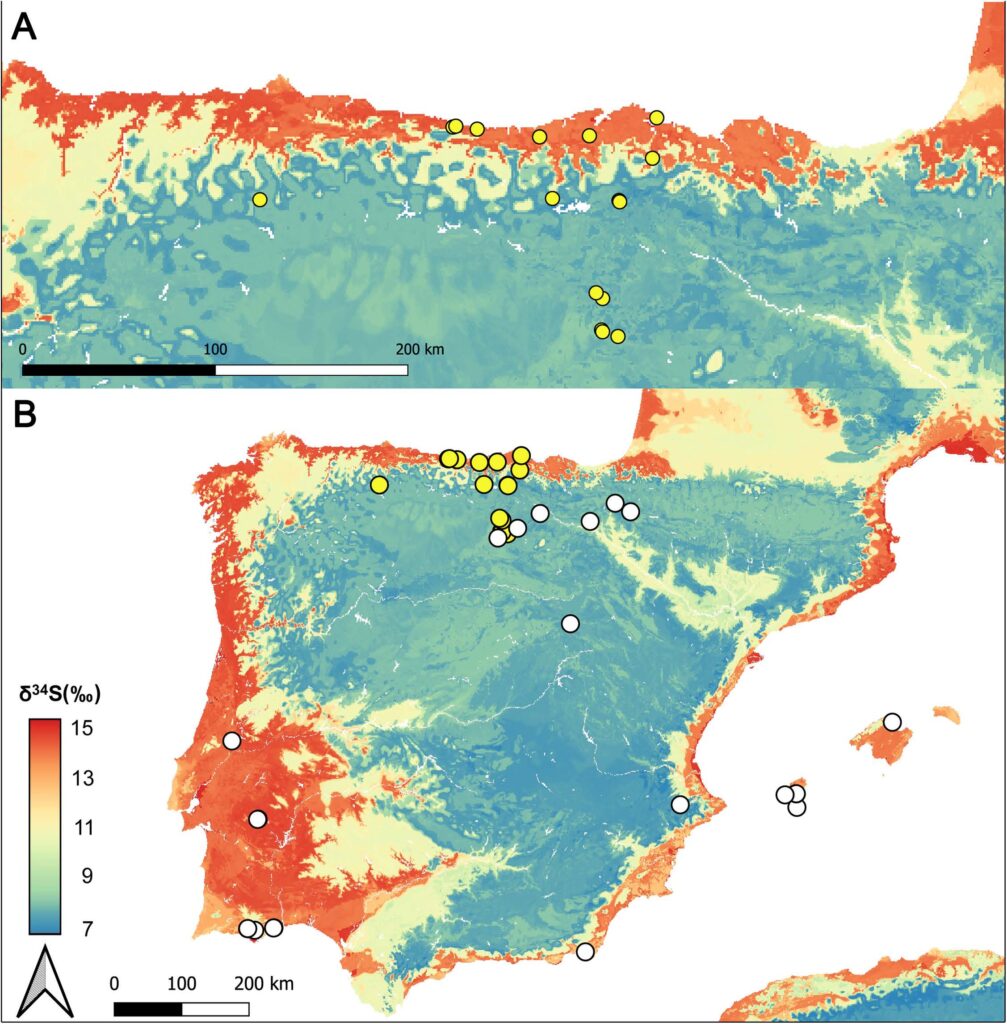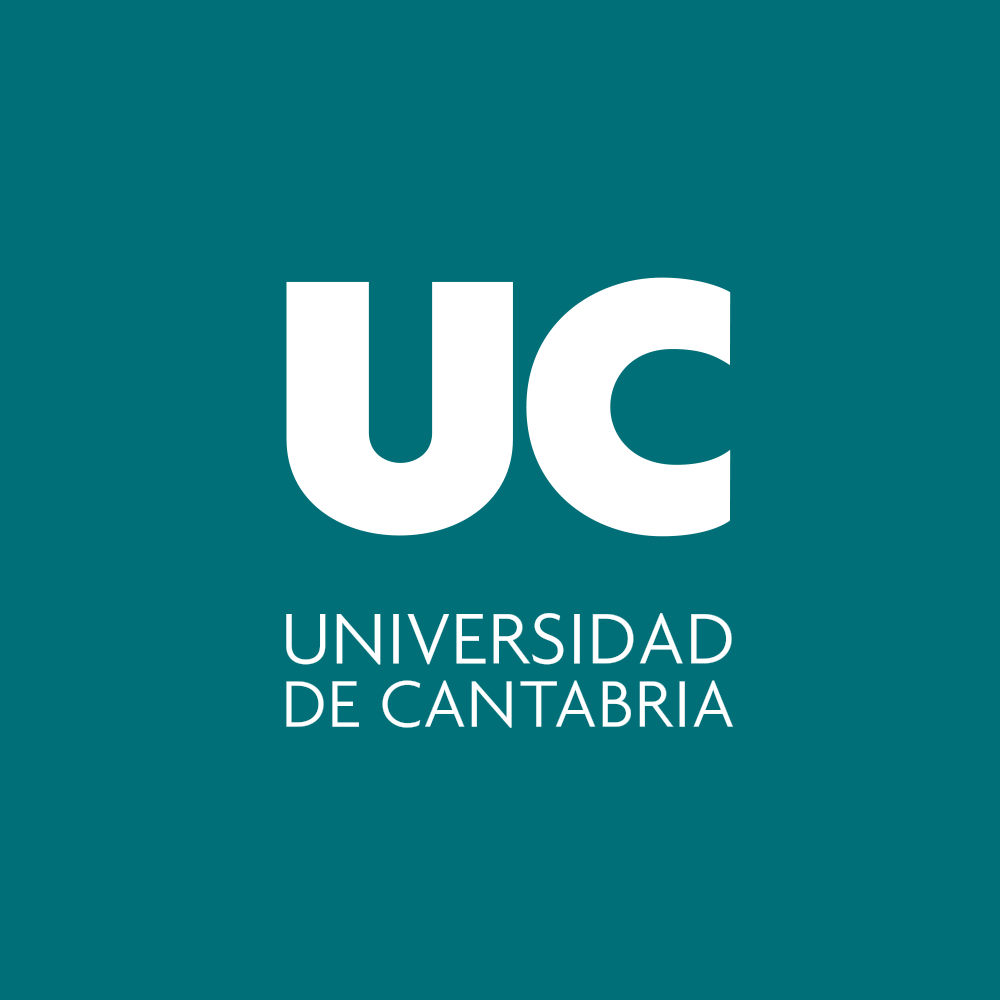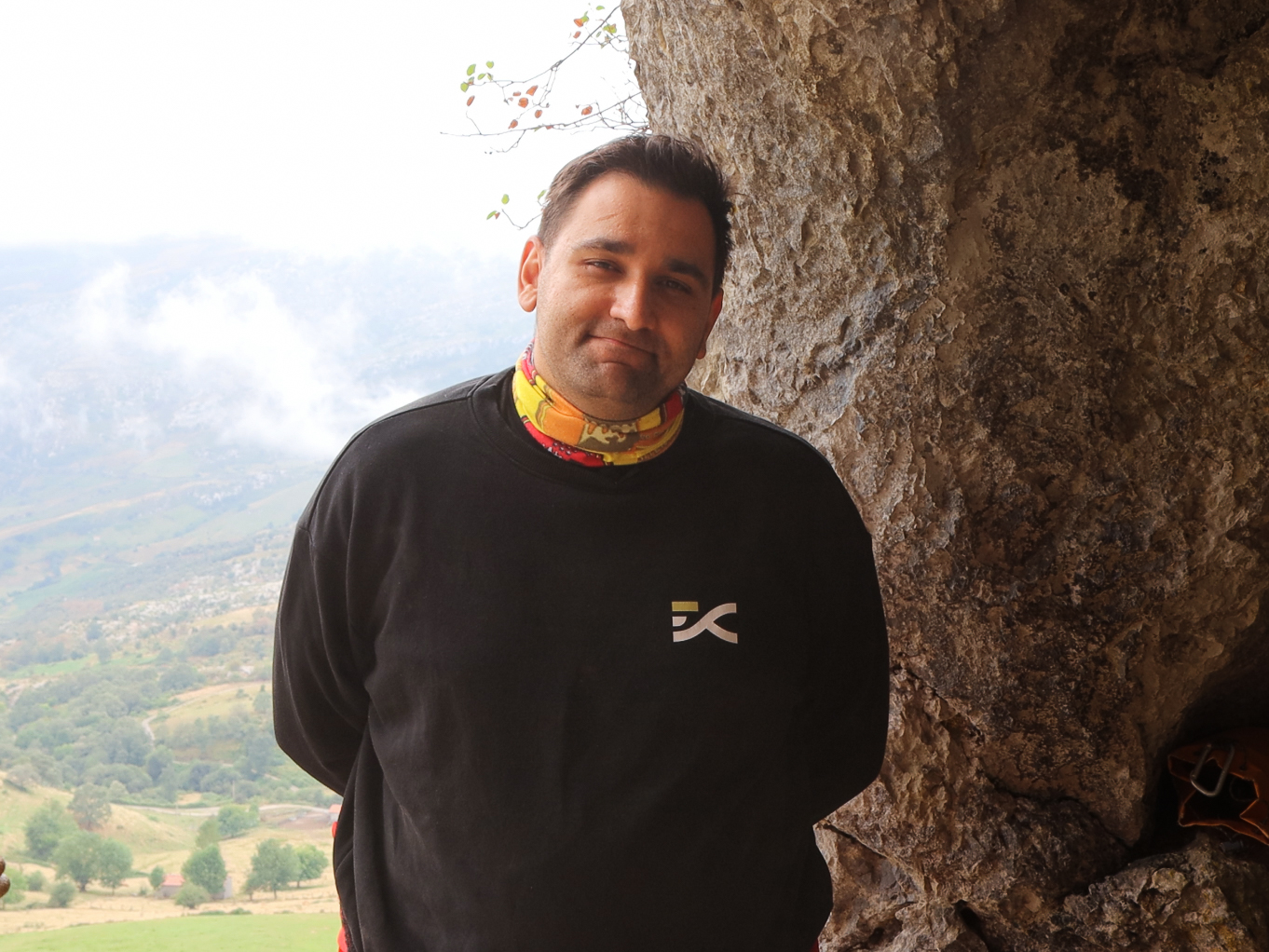A pioneering study by the EvoAdapta Group at the University of Cantabria creates the first sulfur isotopic map proving human migrations during the Late Prehistory
A team from the EvoAdapta Group at the University of Cantabria, together with collaborators from national institutions (University of Valladolid; University of Burgos; University of Oviedo; Junta de Castilla y León; Fundación Gómez Pardo; Institución Fernán González and IIIPC-UC) and international institutions (University of Central Lancashire; University of New Mexico; University College London), has succeeded in demonstrating the mobility of human populations that inhabited the north of the Iberian Peninsula between the Late Neolithic and the Late Bronze Age (3,800–800 BC). The results, published in the international journal PLOS ONE, provide the first evidence of territoriality and population and animal exchanges.
The study analyzes 74 individuals and 68 animals from 17 burial sites, both coastal—among them La Fragua and El Mirón in Cantabria—and inland—Kaite, El Hornazo, and Palomera in Burgos.
The research represents the first comprehensive study of sulfur isotopes (δ³⁴S) in human and animal fossils from the Late Prehistory of Iberia and has produced the first isotopic map of sulfur values. This innovative resource makes it possible to trace the movements of farming and herding groups between the Atlantic coastal regions and the interior plateau.
Sulfur was measured directly in bone collagen, as this element is absorbed by mammals throughout their lives and is directly linked to both the food they consume and the inorganic sulfur present in the geological environment where they live. Coastal individuals display higher sulfur values than those from areas further inland.
The key finding of the study revealed the places where different individuals had lived approximately five years before their death, allowing researchers to reconstruct their most recent geographic movements. Applying this criterion, six people buried in caves along the Cantabrian coast showed isotopic profiles characteristic of the Plateau, indicating an inland origin, while two individuals buried inland displayed isotopic characteristics typical of coastal areas—thus confirming bidirectional movements between the coast and the interior.
“Until now, archaeological evidence—such as the discovery of ceramics or tools in different territories—suggested that there were contacts and some exchange between coastal and inland communities during this period. Thanks to this work, for the first time we have direct scientific evidence that reflects the journeys of specific individuals who physically crossed these landscapes thousands of years ago,” says Borja González Rabanal, lead author of the study, a research associate with the EvoAdapta Group at the University of Cantabria and currently employed at the University of Valladolid.
Innovative methodology
Ana B. Marín-Arroyo, director of the EvoAdapta Group and senior author of the paper, notes that “this is a pioneering methodology implemented at the University of Cantabria that confirms the mobility hypotheses proposed in academia for this period.” Furthermore, the modeling methods applied to the isotopic data provide a new, detailed record that makes it possible to infer with high resolution the place of origin of prehistoric individuals and to reconstruct their movements—opening new avenues to understand how different communities interacted throughout Prehistory.
Looking ahead
The research team highlights the importance of expanding this type of study to other regions and periods of the Iberian Peninsula to incorporate new data into the isotopic map and thus validate the method with even older populations, such as Paleolithic hunter-gatherers. In this way, it will be possible to deepen our understanding of human and animal migrations throughout history, tracing the paths of our ancestors with unprecedented precision.
Read the full article at the following link: https://journals.plos.org/plosone/article?id=10.1371/journal.pone.0330249



